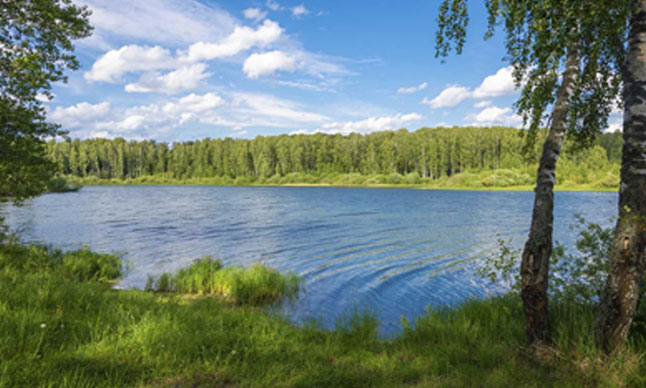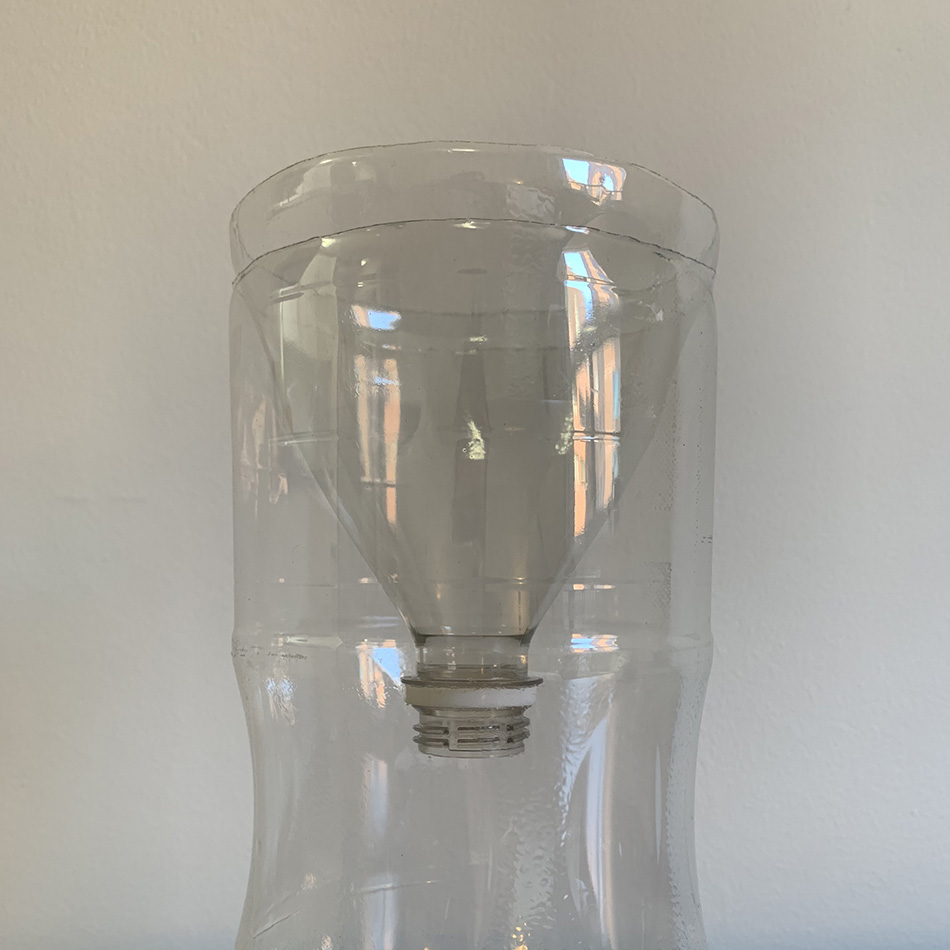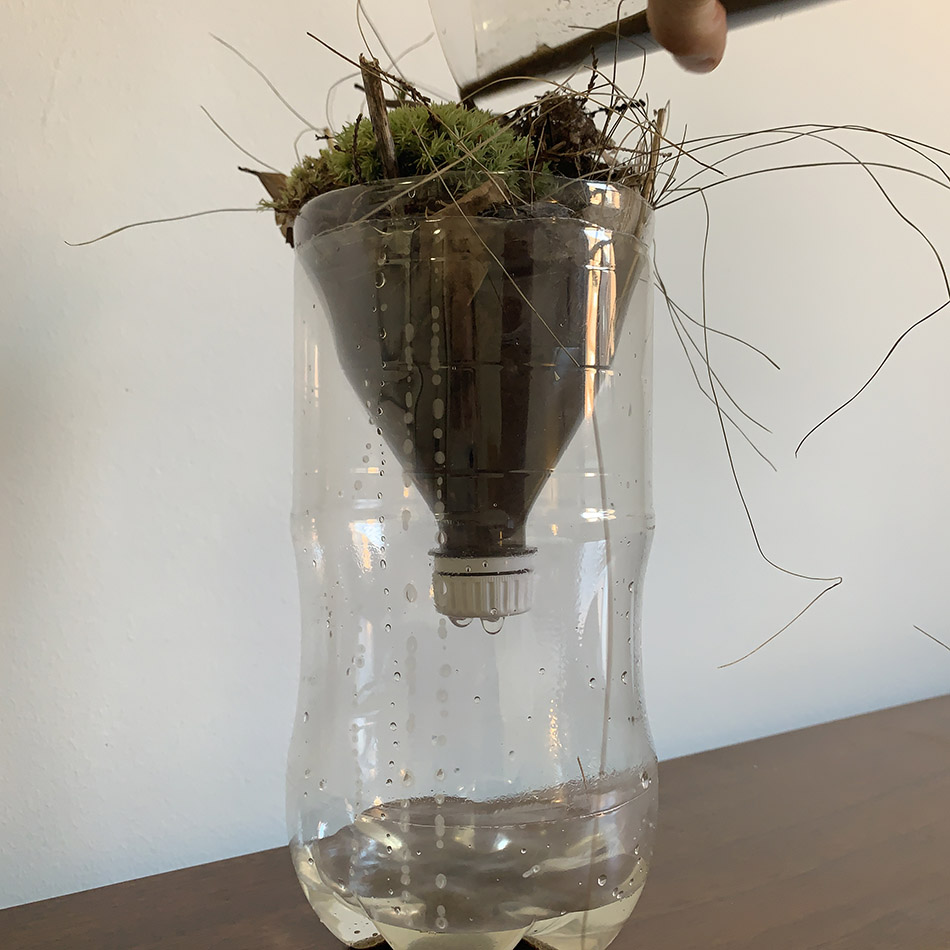Wetland in a Bottle
Create your own wetland and observe how it absorbs and cleans water.
- All
- Things to Make
- Experiments
- Get Outside

What you’ll need:
- 2-litre plastic bottle
- Scissors or a utility knife
- Knife or long sharp nail (or any tool that can poke holes through the bottle cap)
- Organic materials from outside (such as coarse soil, small pebbles, mosses, twigs, leaves or grass)
- Glass of water
- Handful of soil
- Spoon
Safety:
When cutting and poking holes, please have an adult around to supervise and help out.

Activity setup:
- Use the marker to draw a line around the top of the plastic bottle, about one third of the way from the top.
- Carefully cut along the line you drew, using scissors or the utility knife, and separate the plastic bottle into two parts.
- Poke some drainage holes through the plastic bottle cap. Then screw it back onto the bottle.
- Take the top part of the bottle and place it upside down into the open bottom part of the bottle.
- Layer your organic materials into the upside down part of the bottle. Start with pebbles at the bottom, then add grass, mosses, twigs, leaves and any other organic materials you have gathered.
- Add the soil to the glass of water. Stir it up with the spoon until the water is murky.
- Slowly pour your murky water into the organic material in the inverted part of the bottle.
- Watch how wetlands work their magic! What happens as the water flows through the organic materials and comes through to the bottom half of the bottle? How long does it take? What does the water look like?
- Experiment further. What happens if you pack the soil and organic materials more tightly or loosely? How long does it take for the water to flow through now? What happens if you use different materials, or a few different sources of water? How clear is the water with each version of your wetland-in-a-bottle?

How does it work?
Wetlands—such as swamps, bogs, marshes and fens—are low-lying areas of land that are seasonally or permanently covered with shallow water. Wetlands act as natural sponges, absorbing water from rainfall and snowmelt. They slow down the movement of excess water by holding onto it and releasing it gradually, thereby protecting surrounding areas—including those where people live—from flooding.
Wetlands also improve water quality by filtering rainfall and snowmelt before it reaches open water. The masses of plant material in the wetland trap particles that are washed in. Pollutants can be absorbed by the plants or broken down by the bacteria that live on their roots or in the mud at the bottom of the wetland.
In addition to preventing flooding and filtering water, wetlands are home to many plants and animals—from bacteria to bulrushes to beavers. They also provide opportunities for nature appreciation, fishing and hunting.
Canada has 14% of Earth’s wetlands—one of the most diverse and valuable ecosystems on the planet. Given the countless ecological benefits they provide, wetlands are worth protecting. Learn more about the wetlands near you and find out how you can help in their conservation.